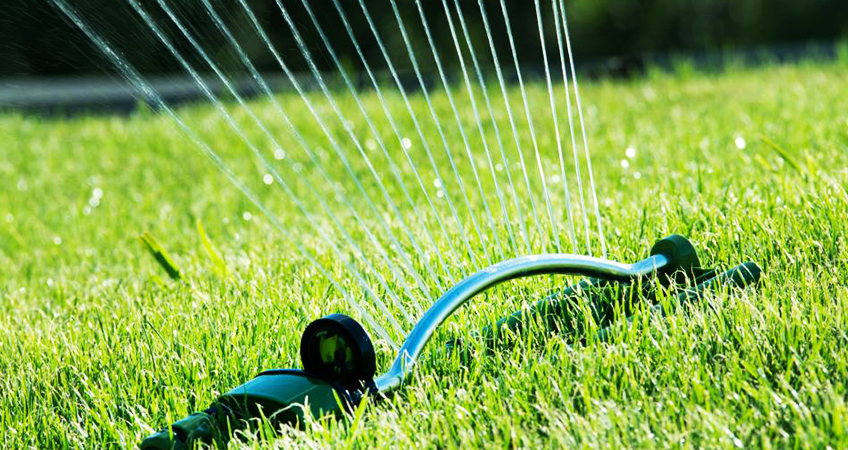The amount of water your lawn requires and receives will determine its overall health, beauty, and ability to withstand use and drought. Keep in mind that too much water can ruin a lawn just as fast as too little.
One inch a week is the standard water requirement established for most lawns; however, this will vary between different turf species and even among cultivars within a species. There will also be varying water requirements for seasonal changes and still more differences brought about because of different soil types.
Look at your lawn to determine its water needs. Grass in need of water will have a grey-blue cast to it, rather than a blue-green or green color. Also, footprints will still appear after a half-hour or more on a lawn in need of water, while on a well-watered lawn footprints will completely disappear within minutes.
Use a soil probe, such as a screwdriver or large spike to determine how dry your lawn is. If the probe can be pushed into the soil easily, it’s probably still moist, but if it takes a lot of pressure to push in, it’s time to water.
Verify watering quantities with the same measuring can method described above, except you will want to note the time it takes for the cans to collect a specific amount of water. For example, if 0.5 cm (0.25-inches) collects in 30 minutes, you can easily calculate that it will take one hour to apply 1 cm (0.5-inches) of water or two hours to apply 2.5 cm (1-inch).
Water timers can help provide consistency and even be programmed or set to turn-off when no one is awake or at home. Some timers measure just the amount of time water is flowing through the device and you have to know or calculate how long to set the timer for (see item above). Other units measure the number of gallons of water flowing through it. Knowing that 600 gallons per 1,000 square feet equal one-inch of water will help you calculate the timer settings your lawn will require.

